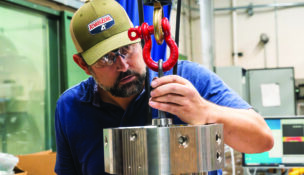Three ways ADUs Go Easy on the Environment
How the Colorado-Based company, Studio Shed, creates ADUs that offer green living solutions through detached backyard spaces.
Jeremy Nova //July 25, 2022//


Three ways ADUs Go Easy on the Environment
How the Colorado-Based company, Studio Shed, creates ADUs that offer green living solutions through detached backyard spaces.
Jeremy Nova //July 25, 2022//
Homeowners thinking about adding freestanding ADUs (accessory dwelling units, a.k.a. in-law apartments, granny flats, or cottages) tend to focus on creating much-needed space without knocking down walls in the houses they’re living in, the addition of rental income, and other practical considerations. The political can also come into play: ADUs provide low-profile, distributed housing, quietly preserving a street’s character and avoiding the ire of neighborhood associations.
In addition to the practical and the political, a third factor plays a role – or least should – in the ADU calculus: the environmental. The environmental advantages of ADUs sort themselves into three broad buckets. The first involves the efficiency of the finished ADU itself; the second is about the benefits of a smaller physical footprint; and the third support greater housing density the distributed, smaller footprints of ADUs enable.
Efficient from the ground up
Freestanding ADUs tend to be much more efficient than the single-family homes they augment. ADU building envelopes typically include above-code insulation and weatherizing with such features as Zip System wall sheathing, OSB with rubberized membranes, and ultrahigh-efficiency doors and windows. ADUs comply with strict building-code standards, which demand that additions and new homes – including ADUs – have enough solar panels to achieve net-zero energy consumption. In addition, ADUs boast tankless water heaters as well as highly efficient mini-split HVAC systems that handle both heating and cooling, and appliances tend to be both right-sized and Energy Star rated.
The high-volume, factory-based production of ADUs also enables a strikingly precise alignment of inputs to outputs. In fact, the waste from the onsite construction of a modular ADU is measured in garbage cans, not dumpsters. That same precision and scale can also enable the efficient recycling of metals and the composting of clean wood waste.
Taken together, a well-built ADU is built tight and runs lean. That translates directly into low utility bills; indirectly, it allows our built environment to tread more lightly on the planet.
Physically (and environmentally) small
When it comes to environmental footprint, a structure’s size matters. A detached ADU of 700 square feet is estimated to have just half the long-term environmental impact of that 2,262-square-foot house.
There are knock-on benefits to going small too. There’s less room to store the stuff that accumulates into the clutter that Marie Kondo has made a career out of curating. Less room means fewer, more deliberate purchases, and less shopping means less embodied energy in the products themselves and, later, less landfilling. As I prepare to move into a 1,000-square-foot prefab home with my family of four, I can attest unequivocally that space constraints modify shopping behavior – for the better, in my opinion.
Low-profile density
ADUs are a thoughtful way to address growing populations. While development on urban fringes consumes open space, reduces natural wildlife habitats, increases air and water pollution, and brings greater risk of mass destruction from wildfires, ADUs in yards closer to downtown translates into less need for cars and more opportunities for public transit.
A 30-mile commute at 23 miles per gallon yields about 2.5-ton annual carbon savings per ADU from commutes not taken. Together, that’s about 42 U.S. households worth of emissions.
There is no shortage of greenwashing in the construction industry, with bold claims about the sustainability of certain materials or techniques that don’t stand up to deeper scrutiny. The environmental advantages of living smaller and more thoughtfully, however, are undeniable.
Backyard studio spaces for work, creativity, or living allow us to extend the life of our existing homes to work in more modern ways. Prefab construction at scale results in meaningful reductions in waste and degradation of the environment. An embrace of these structures at the municipal level will be a key element in solving our housing crisis in a way that results in more livable communities that tread ever more lightly on the planet.
 Jeremy Nova is co-founder and creative director of Studio Shed. A longtime professional mountain bike racer who competed in the 2004 Athens Olympics, Nova built the first Studio Shed to store his many wheels. His passion for smart design, efficiency, engineering, and architecture has buoyed Studio Shed’s growth into the only ADU maker that ships nationwide for installation by a comprehensive network of certified installers.
Jeremy Nova is co-founder and creative director of Studio Shed. A longtime professional mountain bike racer who competed in the 2004 Athens Olympics, Nova built the first Studio Shed to store his many wheels. His passion for smart design, efficiency, engineering, and architecture has buoyed Studio Shed’s growth into the only ADU maker that ships nationwide for installation by a comprehensive network of certified installers.

























